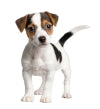FAQ's - DIY's - Tips - Links
Welcome!
These are our FAQ's (including our Image Submission Guidelines), DIY's, Tips, and Links.
FAQ's
What is AlumaComp?
Are other materials/substrates available?
What does "EcoPrint" mean?
Is Lamination a good idea?
What about other customizations?
Image Submission Guidelines
What is AlumaComp?
AlumaComp is our shorthand for aluminum composite material. We like it because it makes a sign that is durable as well as attractive. If you want to invest in a sign that you'll get good use out of for years, this is your best option. One thing to consider is that if you plan to hang your AlumaComp sign, make sure to hang it from something sturdy. Another is that you'll still have to be careful not to scratch the image (this goes for any sign, really, especially if you do not choose to have us laminate your sign for you.)
Are there any other substrate/materials options?
We also have at our disposal easy-to-staple polystyrene (for making sold strips), various thicknesses of corrugated PVC, vinyl, and other materials. We do not usually use fiberglass, plywood (except for the specialty plywood for our A-Boards), paperboard, etc for ecological reasons as well as general quality concerns.
The simplest way to find out if we can make a certain kind of sign in a certain material is to ask us.
What does "EcoPrint" mean?
We image all our signage using vegetable-based latex ink with low VOC's.*
Just because a product is "green" does not mean it is less effective... Our 300 dots-per-inch printing process will combine with your company colors to make an image that is clean and vibrant.
*VOC stands for "volatile organic compound". VOC's are, well, not good. We avoid/limit our and your exposure as best we can by careful selection of our inks and other materials.
Is lamination a good idea?
Since our inks are not as easily scratched once dry as the nasty solvent-based inks our competitors often use, lamination is not a requirement, especially if you handle your signs with care (particularly during storage and transport). Not needing to laminate every sign saves time on our end and money on yours, and prevents waste.
But lamination has some benefits, especially if you want a sign that can take some abuse and still look pretty. Our lamination process will protect your sign from UV rays, add a very handy layer of extra scratch resistance to the image, and increase the general life of your sign. Think of it as being like a form of insurance, where paying just a bit more now could save you from either going to a lot of trouble to baby your sign or from having to prematurely replace the whole sign due to image damage.
Availability may vary. If you are interested in having us laminate what we make for you, email us at champsigns@gmail.com.
What about other customizations?
Rounded corners, added imagery such as a Head Shot or QR code, and various other options may be available.
If you're thinking about submitting an image please note that including your own art may increase the time and cost of your order (and check out our Image Submission Guidelines below). We'd love to discuss your ideas at champsigns@gmail.com.
Image Submission Guidelines
WARNING: Artwork that looks pretty good when viewed on your screen could end up looking pretty awful on your sign. We are not going to waste our ink printing a sign you're going to be unhappy with, so if we reject your image submission, this is why. We want you to be happy.
For QR codes, please generate the image either as a high-quality vector image or at as large a size as possible and use a quality program such as CorelDRAW or Adobe Photoshop to export it as a highest-possible-quality 300 DPI* image.
For Head Shots, remember that this is your face and we want to make it look good. Get a full-resolution copy of the photo from your photographer and have it processed into a highest-possible-quality 300 DPI* image.
For other images, the same rules apply: either it has to be a vector image, or at full print size at 300 DPI.
For example, here are two photos of a dog... you would not want your sign looking like the first one, right?


*300 DPI refers to an image being 300 Dots Per Inch. Most computer moniters are 72 DPI, but we print at 300, which is why an image that looks okay on a computer monitor may look awfully pixelated when printed at full size. We're sorry but MS Publisher and other non-professional-level programs just won't do these operations well enough to make you a decent sign.
You, the customer, are responsible for origin of any art you wish to submit. By submitting art you certify you have permission to use the art and and authorize us to use and print (and adjust as needed) said art.
DIY's
Very soon we are going to make some no-tricks product demonstration videos. When we do, we'll post links to those videos here. In the meantime, we are very grateful for your continued patience.
Tips
- This is or "Tips" section
- We're going to put tips here
- Good tips
- Helpful tips
